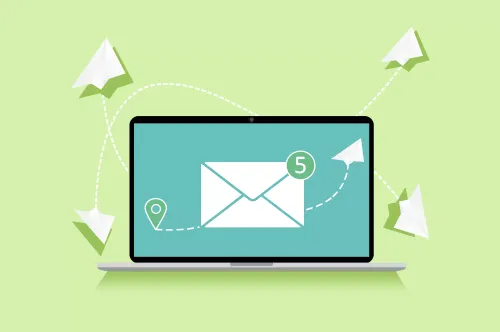Dealing with bounced emails is a common challenge faced by email senders. When an email bounces back to the sender, it means that the email was not delivered to the intended recipient and was returned to the sender's inbox. Understanding why emails bounce and how to manage them is crucial for maintaining a healthy email list and optimizing email deliverability. In this comprehensive guide, we will explore the concept of email bounce to the sender, its causes, and provide valuable insights on how to effectively manage and address bounced emails in your email campaigns.
What is Email Bounce to Sender?

Email bounce to the sender occurs when an email is returned to the sender's inbox instead of being delivered to the intended recipient. This happens when the recipient's email server rejects the email due to various reasons, such as an invalid or non-existent email address, a full mailbox, or technical issues on the recipient's server.
When an email bounces to the sender, it is important to take appropriate actions to manage and address the issue. By understanding the causes of email bounce and implementing best practices, you can minimize bounce rates and optimize email deliverability.
Causes of Email Bounce to Sender
Several factors can cause an email to bounce back to the sender. Understanding these causes can help you identify and address the underlying issues. Here are some common causes of email bounce to the sender:
1. Invalid or Non-Existent Email Address
If the recipient's email address is invalid or does not exist, the email will bounce back to the sender. This can occur when a recipient mistypes their email address or if the address is no longer active.
2. Full Mailbox
When a recipient's mailbox is full and cannot accept new messages, emails will bounce back to the sender. This can happen when a recipient neglects to manage their mailbox and allows it to reach its storage limit.
3. Technical Issues on Recipient's Server
Emails can bounce if there are technical issues on the recipient's email server, such as server downtime, misconfigurations, or network connectivity problems. These issues prevent the server from accepting and delivering incoming emails.
4. Content or Formatting Issues
If an email contains suspicious content, triggers spam filters, or has formatting issues, it may be rejected by the recipient's email server and bounce back to the sender. This can happen when the email is flagged as spam or violates certain email standards.
5. Sender Reputation or Blacklisting
If the sender's IP address or domain has a poor reputation or has been blacklisted by email service providers or spam detection systems, emails may bounce or be filtered as spam, resulting in delivery failures.
Managing Email Bounce to Sender

Effectively managing email bounce to the sender is crucial for maintaining a healthy email list and optimizing email deliverability. Here are some best practices for managing and addressing bounced emails:
1. Monitor Bounce Reports
Regularly monitor bounce reports provided by your email service provider or email marketing software. Analyze bounce codes and categorize them into hard bounces (permanent failures) and soft bounces (temporary failures).
2. Clean and Update Your Email List
Regularly clean your email list to remove invalid or non-existent email addresses. Implement a process to verify email addresses and update any changes to ensure accurate and up-to-date contact information.
3. Implement Double Opt-In
Utilize a double opt-in process where subscribers confirm their email address after signing up. This helps reduce the chances of invalid or mistyped email addresses entering your list.
4. Segment and Personalize Your Emails
Segment your email list based on recipient preferences, interests, or demographics, and personalize your emails accordingly. Sending targeted and relevant content can help improve engagement and reduce bounce rates.
5. Improve Sender Reputation
Maintain a good sender reputation by following email marketing best practices, adhering to email regulations, and promptly addressing any issues that could impact your reputation. Regularly monitor your sender score and take steps to improve it if necessary.
6. Use Email Validation Services
Consider using email validation services or tools that can verify the deliverability of email addresses in real-time. These services can help identify invalid or risky email addresses before sending emails and minimize bounce rates.
Conclusion
Email bounce to the sender occurs when an email is returned to the sender instead of being delivered to the intended recipient. By understanding the causes of email bounce and implementing best practices for managing bounced emails, you can minimize bounce rates, improve email deliverability, and optimize the success of your email campaigns.
Commonly Asked Questions
1. How can I reduce email bounce to the sender?
To reduce email bounce to the sender, regularly monitor bounce reports, clean and update your email list, implement double opt-in, segment and personalize your emails, improve sender reputation, and consider using email validation services.
2. Are soft bounces a cause for concern?
Soft bounces are usually temporary and do not indicate a significant cause for concern. However, if you notice a high rate of soft bounces, it's important to investigate and address any underlying issues to ensure successful email delivery.
3. Can I bounce back an email to a specific sender?
No, bouncing back an email to a specific sender is not possible from the recipient's end. Bouncing emails is a function typically available to email service providers or administrators to handle specific cases.



